10 ECOMMERCE TRENDS THAT YOU NEED TO KNOW IN 2021
In 1995, the first item ever was ordered online on Amazon – a book.
Around 20 years later, the ecommerce industry has made over 2 trillion US dollars in sales worldwide. There’s no looking back now.
Ecommerce has revolutionized retail. It has evolved to meet the changing needs of people, and to make online shopping easier for the modern day customer. When it started, ecommerce was fairly limited in its capabilities. But not anymore. Whether it’s customization, enhanced return policies, or improved integration, all of these changes (among countless others) have taken the world of ecommerce by storm. And 2021 is here to further transform the world of ecommerce.
So, if you’re still on the fence about the future of ecommerce, these ecommerce trends will prove to you that ecommerce isn’t just rapidly growing, it’s here to stay. And you too can include these ecommerce developments into your business to ensure steady growth of your online store.
To take your ecommerce business to the next level in 2021, make sure to take advantage of these emerging trends in the ecommerce industry.
Why Are Ecommerce Trends so Important?
The ecommerce world is becoming increasingly competitive. To stay ahead of the competition, ecommerce trends need to be constantly monitored. No matter how mature your ecommerce store is right now, if you don’t keep up with ecommerce trends, you’ll risk falling drastically behind. You need to keep looking ahead to ensure future success. As we move into 2021, you need to know these trends in order to take advantage of them. That’s why it’s so important that ecommerce trends are analyzed and adopted in a timely manner. By doing this you can drive your ecommerce brand forward, and stay ahead of your competition.
Top Ecommerce Trends 2021:
Are you wondering what the future of ecommerce looks like? Do you want to look into what trends will shape the success of your online store? Here are the top 10 ecommerce trends for 2021 that you need to look out for.
1. Online Sales Growth is Unstoppable
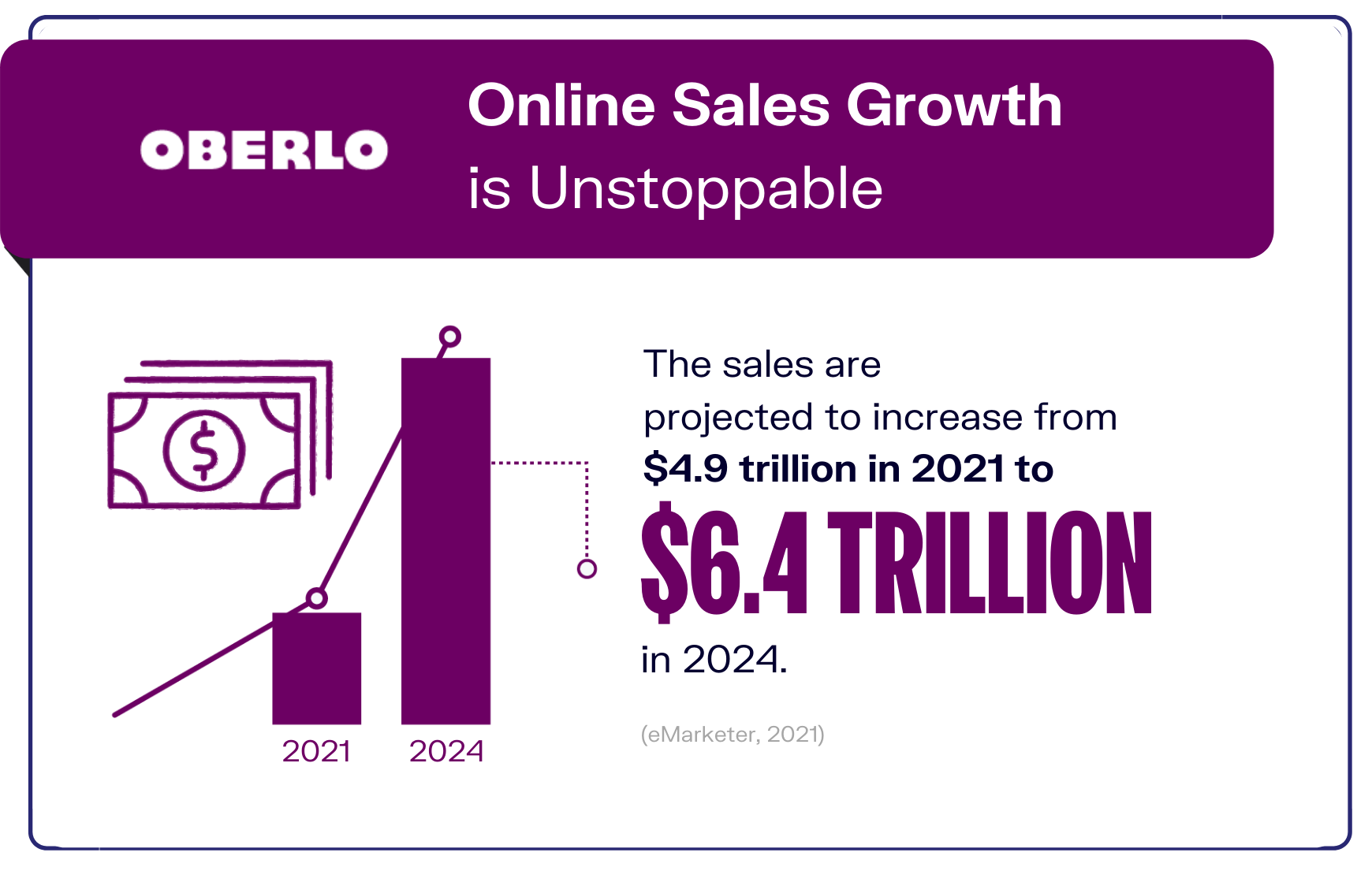
Ecommerce sales have been growing constantly and for good reason. Online shopping is one of the most popular online activities. Global ecommerce sales are projected to increase 26.7 percent year-over-year to $4.891 trillion in 2021 (eMarketer, 2021).
That’s not all. Online sales are expected to continue growing and hit $6.388 trillion – nearly twice that of 2019’s total ecommerce sales.
Even though online shopping is one of the most popular online activities, its usage varies by region. With the increasing popularity of ecommerce stores, a rising number of people are turning to online shopping.
This increase in online shopping can be attributed to a number of factors. One of the main ones is arguably the level of comfort that is provided to online shoppers.
There is also an increase in trust that online buyers have when they are purchasing online, as well as improved website experience. At one point, people used to be hesitant to buy things online, but that’s no longer the case. Websites have also become a lot more customer-friendly.
With all the comfort that is provided, there’s no surprise that online sales growth is becoming unstoppable.
2. The Future of Ecommerce After COVID-19
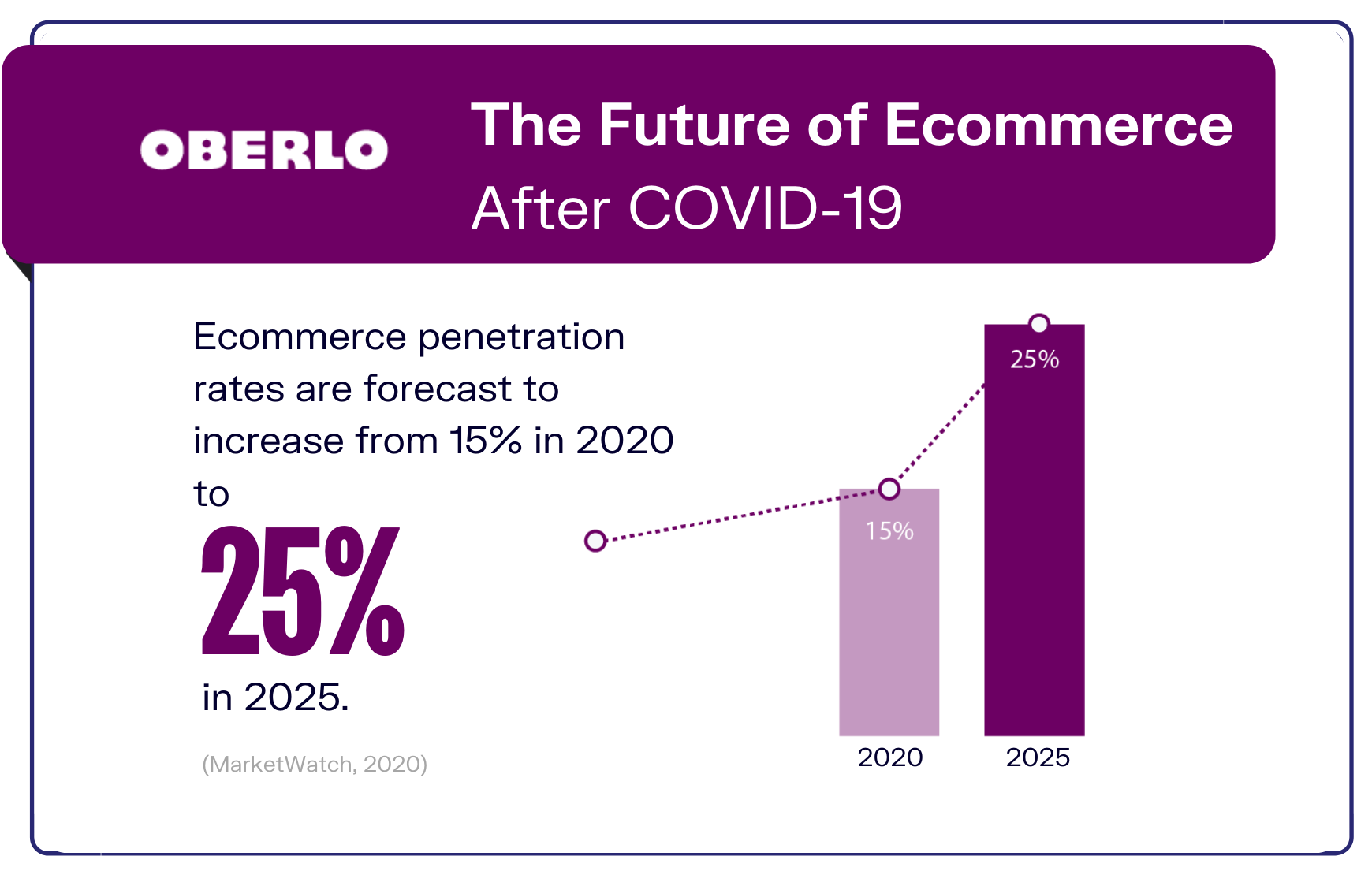
Undeniably, one of the biggest impacts—if not the biggest—on ecommerce trends in 2020 will be COVID-19.
With governments worldwide shutting stores and implementing lockdowns to restrict social movement for months on end in a bid to combat the coronavirus, more and more people are resorting to online shopping to purchase items.
Already, ecommerce giant Amazon’s Jeff Bezos has seen his fortune grow by nearly $24 billion thanks to increased customer demand for Amazon’s products and services.
And experts predict that the impact of the coronavirus will not just be a short-term boost to ecommerce but one that’s here to stay, even after COVID-19. This is because people will get comfortable with the comfort and convenience it offers and the benefits of contactless payments, both of which are likely to cause a permanent behavioral shift towards digital purchases.
In fact, market analysts say that the ecommerce industry will be the biggest beneficiaries of the coronavirus pandemic. Penetration rates, which are currently at 15 percent, are expected to increase to 25 percent by 2025 (MarketWatch, 2020). That marks a 67 percent increase in five years.
The positive COVID-19 impact on ecommerce, unfortunately, spells a heavy loss for brick-and-mortar stores. As many as 100,000 are forecast to shut over the next five years.
At an estimated 24,000 closures, apparel retailers will be the most affected, followed by 12,000 consumer electronics stores, and 11,000 home furnishings and grocery stores each.
3. Mobile Shopping is Growing
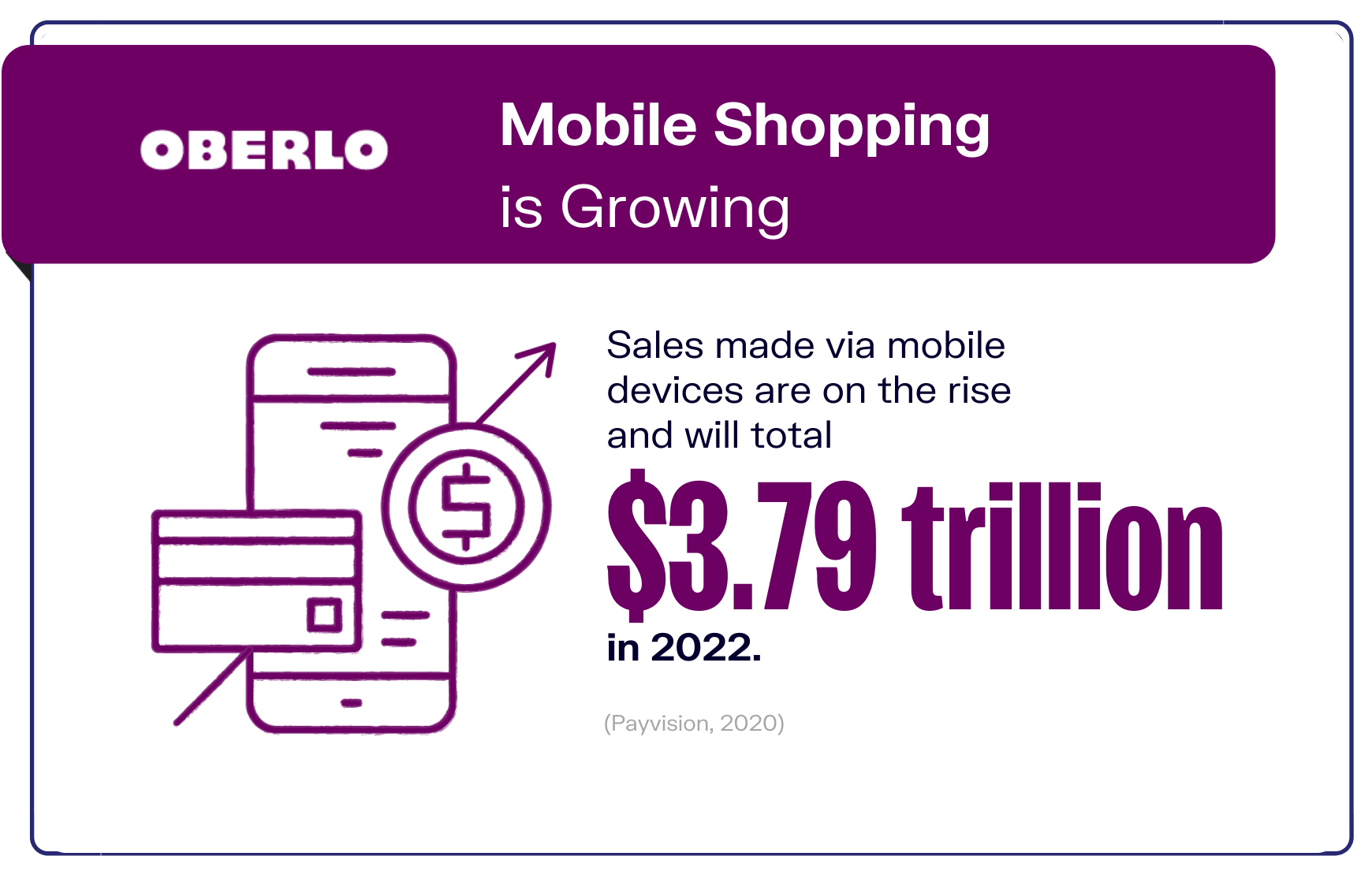
The growth of mobile commerce has been particularly noteworthy. In 2020, total sales made via mobile devices came in at $2.66 trillion. This figure is expected to grow 18.8 percent to $3.16 trillion this year before further rising to $3.79 trillion in 2022 (Payvision, 2020).
These figures can’t be ignored. Improving the ecommerce experience for mobile customers can be a huge opportunity for businesses to tap into.
Ecommerce growth has been driven in part by the increase in usage of mobile devices. That’s because consumers aren’t just checking out online, they’re also using their mobile devices to browse or research before making their mind up about their purchase.
As trust in online shopping increases, consumers start to feel more comfortable shopping on mobile devices than ever before. This is especially so with Millenials and Gen Z consumers, who have grown up surrounded by computers and the internet. These generations are also more likely to be shopping online using their mobile devices in comparison to older generations.
With more and more sites now optimized for mobile use, make sure that not only your website, but your online store is optimized for mobile devices as well. By doing this, you’re making ecommerce simpler and more accessible for a larger audience.
4. Young Consumers To Change the Business Landscape
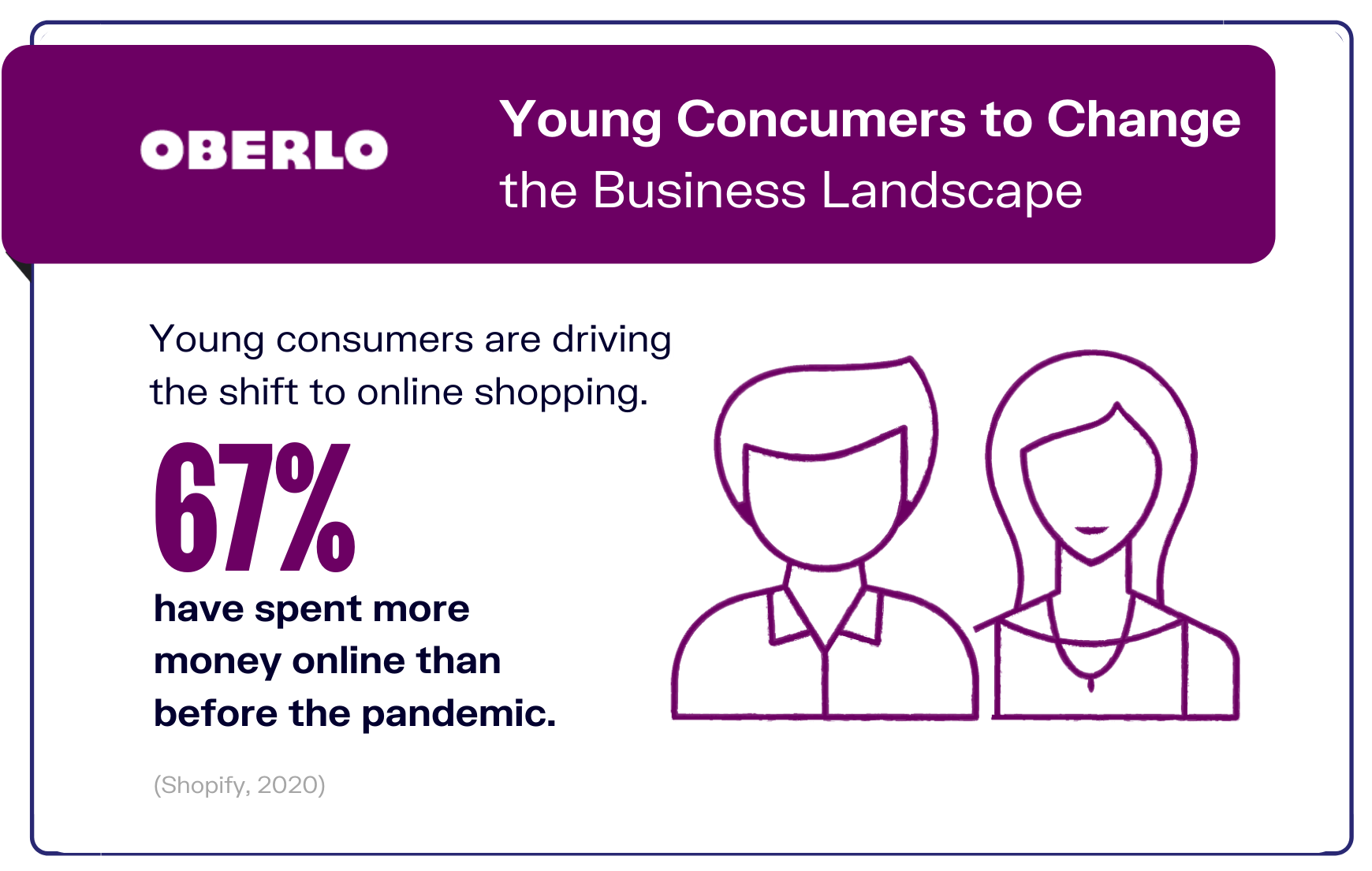
The coronavirus pandemic’s effect on ecommerce cannot be denied. More than half (54 percent) of consumers increased their spending online after the coronavirus hit.
But even though this shift to online shopping is seen across consumers of all ages, it’s mostly the younger generation that’s responsible for this ecommerce trend.
Survey results show that two out of three (67 percent) young consumers aged 18 to 34 are spending more money purchasing items online now than before the pandemic (Shopify, 2020).
The growth is slightly more muted for the older age groups. Consumers from 35 to 54 years of age increased their online shopping expenditure by 57 percent, while this figure is just 41 percent for consumers aged 55 and above.
That said, going forward, as an ecommerce business owner, you should be targeting the younger generation to increase your sales potential.
To do so, consider increasing your social media marketing efforts. More than half of young consumers who buy from independent brands discover them via social media—more than any other age group.
5. Evolving Role of Social Media in Ecommerce
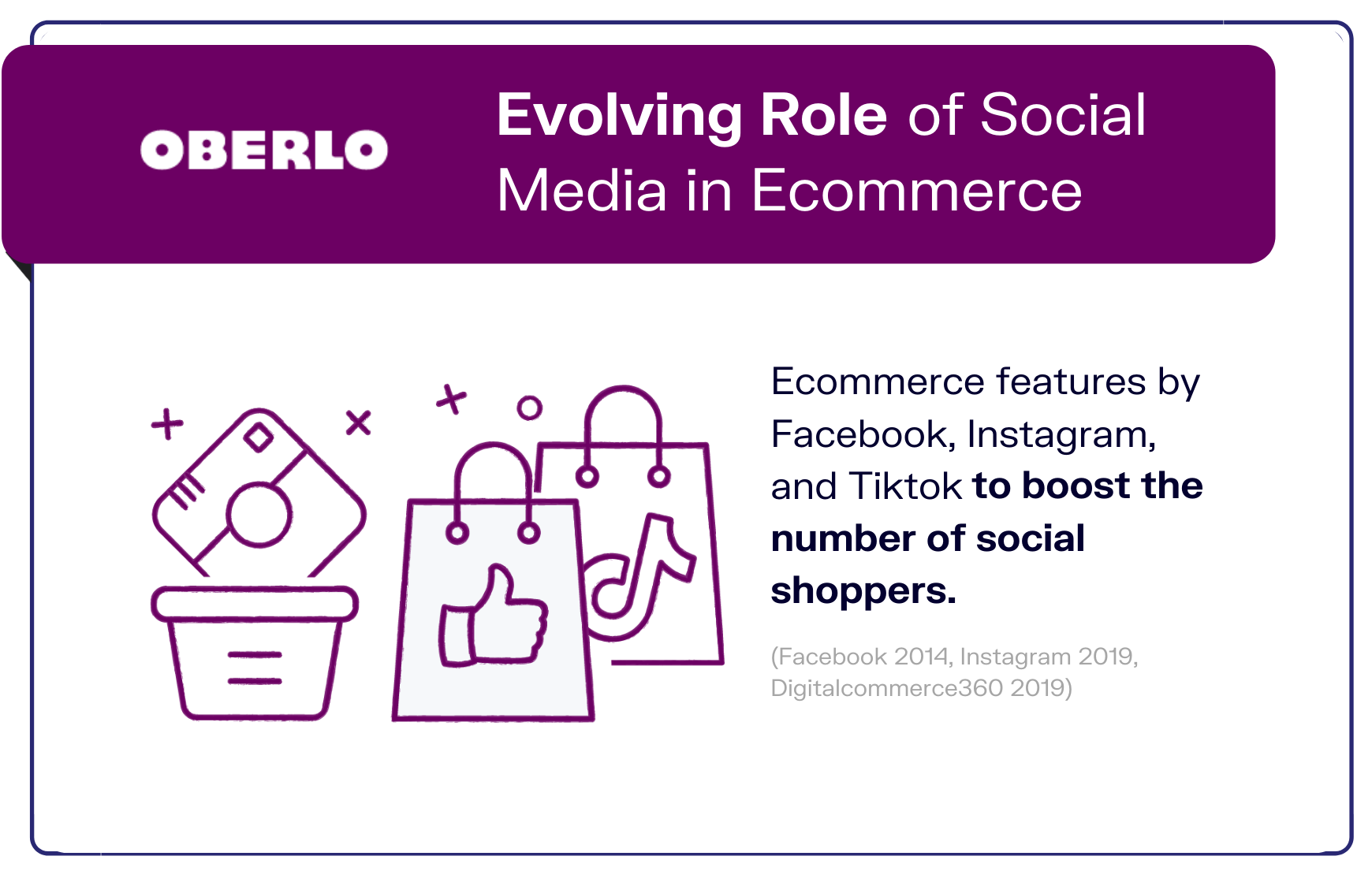
The number of social shoppers is also rapidly increasing. With the introduction of the “Buy” button on Facebook, and Instagram Checkout, social media is playing a significant role in the world of ecommerce.
Social media has changed the way we live our daily lives, including the way we buy things. This is a great opportunity for brands to start thinking about how to improve their position on social media, which is a great platform for brands to get discovered. With consumers spending more time on different types of social media, ecommerce businesses can get help from Instagram influencers to increase their chances of getting discovered by their target audience.
Additionally, with platforms like Shopify, businesses can easily link their online stores with social media sites so that people can buy from them directly through social media. Instagram and Facebook, for example, are constantly updating their features to meet the comfort needs of online buyers.
And who can forget TikTok – the latest and rising rave within the world of social media that has not only made its way into the hearts of teens but also around Hollywood?
The video-sharing app has been working on incorporating ecommerce elements and its latest efforts include testing a new feature that will allow users to include shoppable links in their profiles or videos. This means that users who click on the link will be taken to the URL within TikTok itself without having to leave the app to access the site.
These social media platforms act as channels for inspiration and allow brands an opportunity to be discovered while people scroll through their feeds. As social media continues to become a regular part of our daily lives, its power to influence ecommerce trends will only increase. That’s why brands need to adopt a shopping-focused approach to their social media strategy.
6. Environmental Topics Influence Buyers
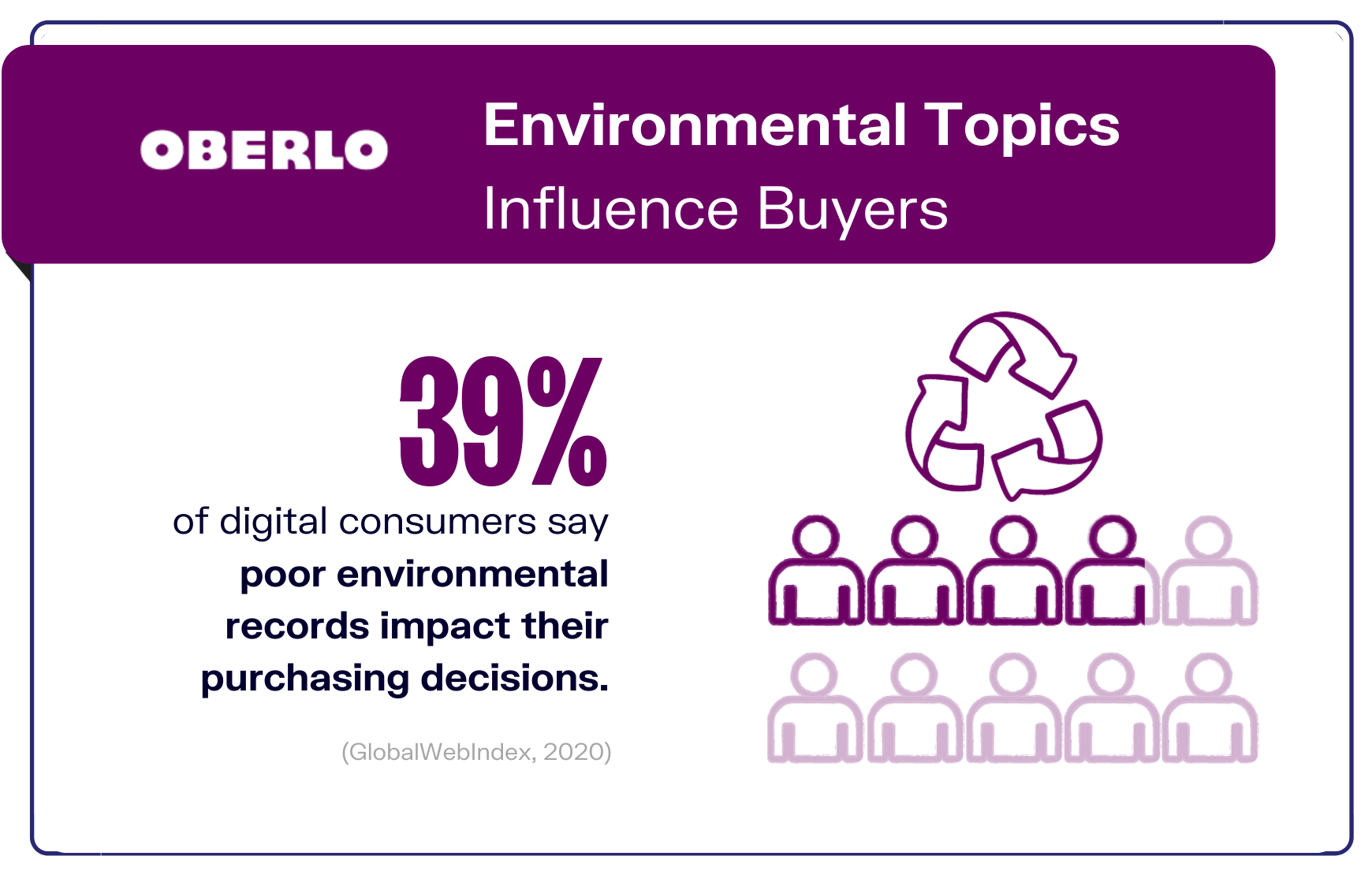
Green consumerism is on the rise, and brands need to take action. Nearly four in ten digital consumers say that poor environmental records impact their purchasing decisions (GlobalWebIndex, 2020).
As an ecommerce business, you should strive to create more sustainable practices. Consumers these days have become more conscious of the environment than ever before, and for the right reasons.
Online businesses need to step in and make sure that their practices are environmentally friendly. This includes practices of sourcing products from fair-trade organizations to help create a greener ecommerce environment.
Millennials are paving the way forward to greener consumerism habits. Whether it’s free-range meat or vegan skincare products, there is an increasing demand for brands to start taking care of our environment. Consumers are beginning to feel more responsible for the planet, which in turn increases the responsibility for brands to cater to the eco-friendly needs of customers.
7. The Desire To Shop With Independent Businesses
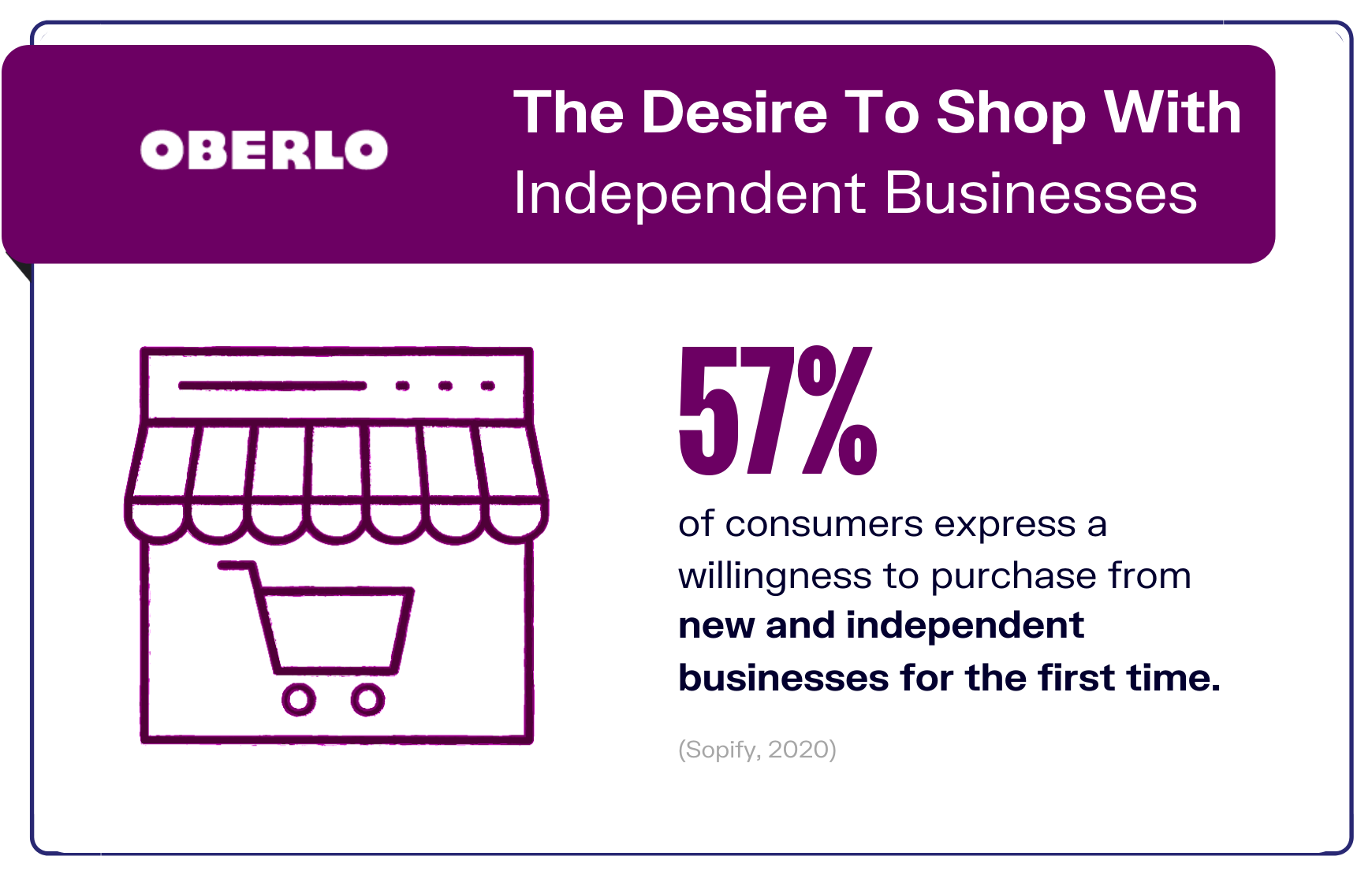
Not only are more and more consumers shopping online, but their shopping habits and brand preferences have also evolved.
The focus on sustainability and environmental practices aside, a growing number of consumers are also becoming more open towards purchasing from independent businesses. More than half (57 percent) say they’re willing to shop with new brands for the first time (Shopify, 2020).
The increase in support has been driven by the pandemic, which affected many small businesses and spurred many to buy from them and support them. In fact, more than one-third (37 percent) of consumers who shop with independent businesses say they’re doing so now more than during pre-COVID-19 times.
Some of the top reasons to buy from independent brands include wanting to support entrepreneurship, which 33 percent of consumers cite as a reason, an interest in unique products (33 percent), and to experience good customer service (31 percent).
8. Augmented Reality Transforms How We Shop
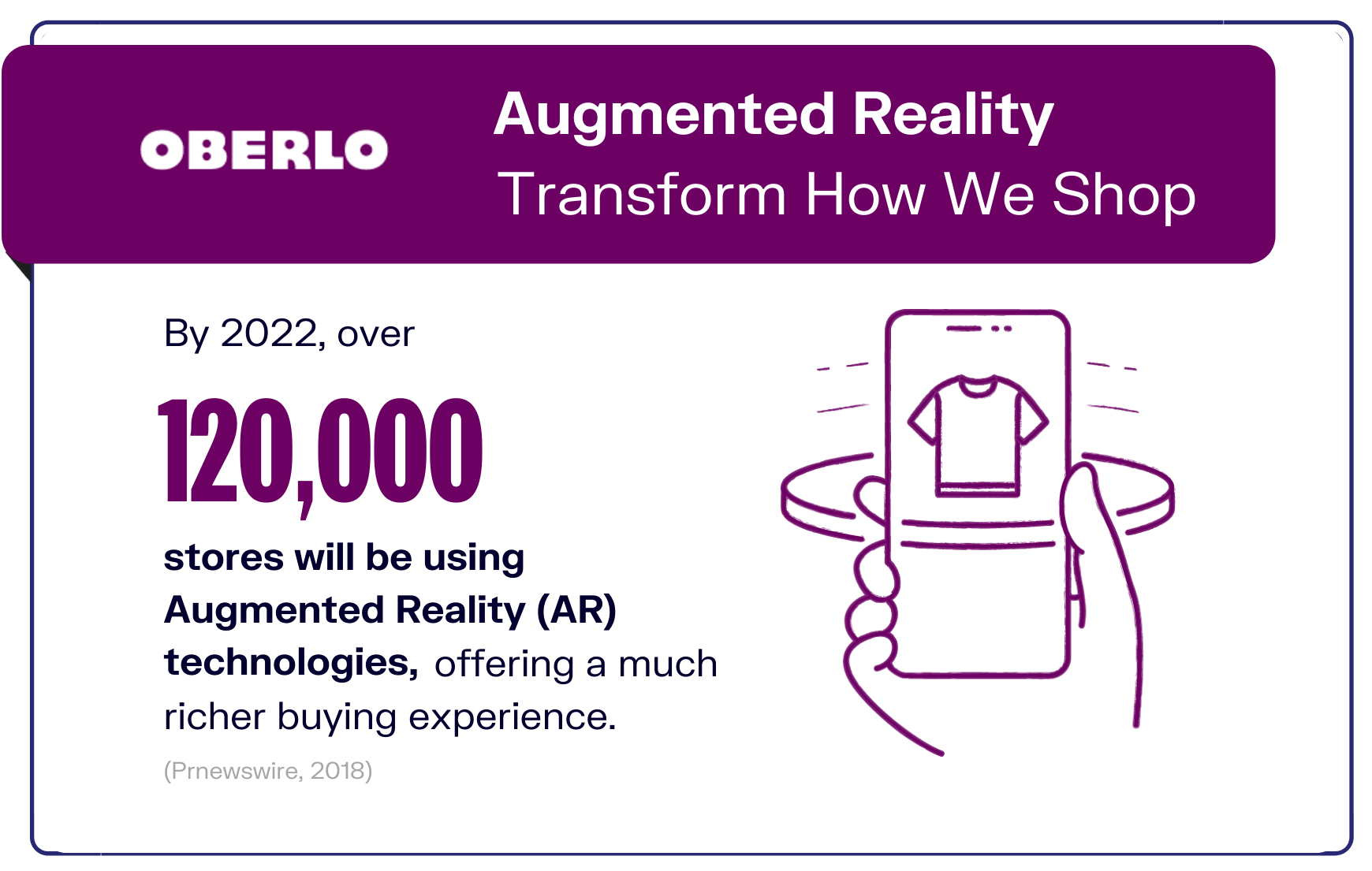
By 2022 over 120,000 stores will be using Augmented Reality (AR) technologies, offering a much richer buying experience (Prnewswire, 2018). AR uptake in the sector will be driven by the retail workforce and online shoppers. One of the main concerns that people have when shopping online is the inability to see the product firsthand. AR technology helps bridge this gap and enable online shoppers to better visualize the products that they are interested in.
For online customers this could be a game changer. AR experiences can change the way that online customers perceive the products that they intend to buy. With the use of AR, customers will be able to better understand their needs and if the products that they intend to purchase meet their demands. Some ecommerce brands have already started to experiment with AR, which will help them stand out from the competition. Delivering more personalized experiences to consumers will allow for better online shopping. Companies are using AR not only to enhance the customer experience but also to allow shoppers the ability to test and explore products in the way that they would do during an in-person shopping experience.
9. Personalization is the Future
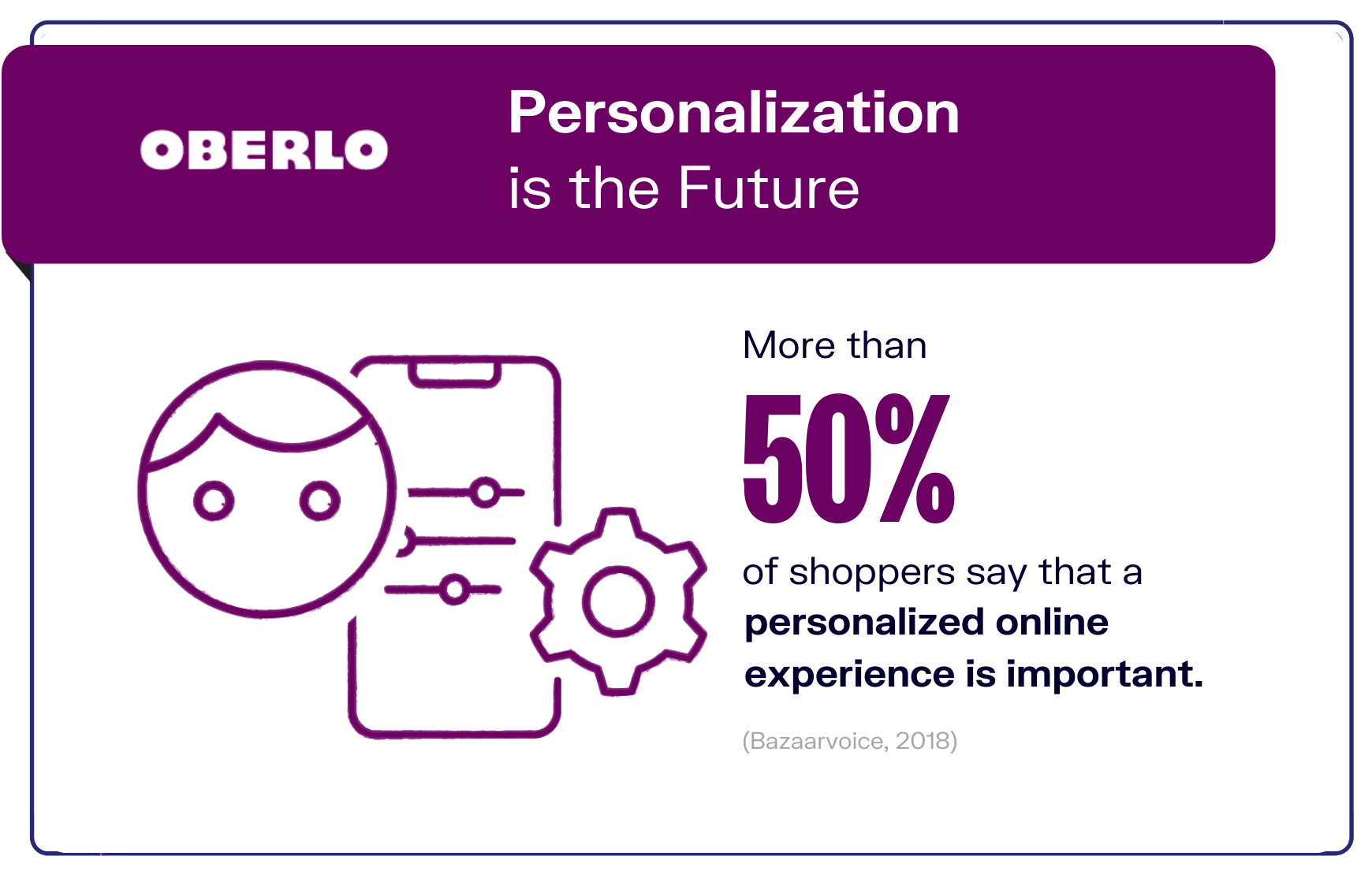
More than 50% of shoppers say that a personalized online experience is important (Bazaarvoice, 2018). Adding to that, 74% of marketers believe personalization has a “strong” or “extreme” impact on advancing customer relationships (Evergage, 2018).
Personalizing the online shopping experience is the key to keeping customers satisfied. People shopping online want help to find the products that they need, and they value a more personalized experience. As a result of poor product recommendations, online shoppers might avoid certain stores altogether.
Ecommerce sites are onboard with this trend and are investing in personalization tactics to make the online shopping experience a better one. This could include the personalization of messages that go out via email, or by providing the right information to the interested consumer group. By offering personalized customer communications, providing relevant discounts, and engaging with customers through, for instance, video content, will help deliver a better shopping experience and strengthen the bond with your customers.
10. Visual Commerce Is on the Rise
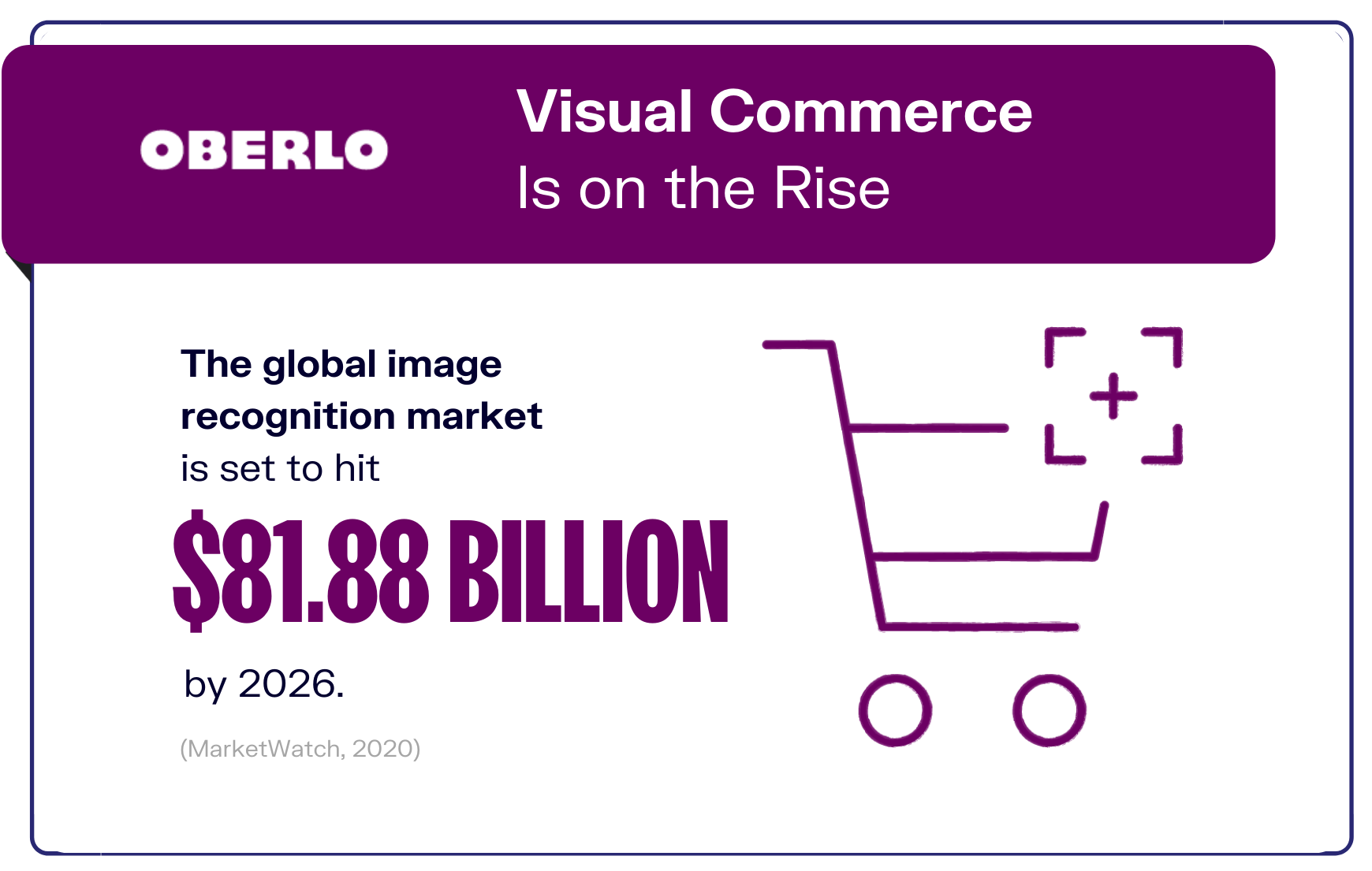
One of the many difficulties of running an ecommerce store is having to sell your product to consumers who have no chance of physical interaction with your product. That’s where visual commerce comes into play.
In short, visual commerce is the next generation of normal static visuals. It takes marketing to a whole other level as instead of simply using product photos to market your business, visual commerce takes it one step further by incorporating other types of visuals such as consumer-generated media, interactive content, engaging videos, and as previously mentioned, augmented reality.
Visual commerce is slowly but surely becoming an integral of ecommerce, as shown by the growth of the deep-learning technology behind it. This includes the image-recognition market, which is set to grow from $20.19 billion in 2018 to $81.88 billion by 2026 – marking a compound annual growth rate of 19.6 percent (MarketWatch, 2020).
The usage of image recognition is expected to be the most prevalent in the North American market, which actually correlates with the popularity of and demand for visual content among US consumers. As it stands, approximately 75 percent of internet users in the US search for visual content before carrying out a purchase on a regular basis. Only a handful (3 percent) do not.
Conclusion:
With the advancement in technology and changes in consumer behavior, you need to keep an eye out for these ecommerce trends in 2020. Whichever ecommerce trend you decide to adopt, do it with the aim of improving the shopping experience for your customers, and building a long-lasting relationship with them. Take your ecommerce evolution to the next level, by evolving with it side-by-side, and taking advantage of these ecommerce trends.

Summary: Ecommerce Trends
Here’s a summary of Ecommerce Trends for 2021:
- Ecommerce sales are projected to increase from $4.9 trillion in 2021 to $6.4 trillion in 2024.
- Ecommerce penetration rates are forecast to increase from 15 percent in 2020 to 25 percent in 2025.
- By 2022, mobile commerce sales will rise to $3.79 trillion.
- Young consumers are driving the shift to online shopping. 67 percent have spent more money online than before the pandemic.
- Ecommerce features by Facebook, Instagram, and Tiktok to boost the number of social shoppers.
- Green consumerism is on the rise due to environmental topics influencing buyers.
- 57 percent of consumers express a willingness to purchase from new and independent businesses for the first time.
- By 2022 over 120,000 stores will be using AR technologies offering a much richer buying experience.
- More than 50% of shoppers say a personalized experience online is important. 74% of marketers believe personalization has a “strong” or “extreme” impact on advancing customer relationships.
- The global image recognition market is set to hit $81.88 billion by 2026.
Are you excited about these ecommerce trends in 2021? Or uncertain? Let us know in the comments below!
